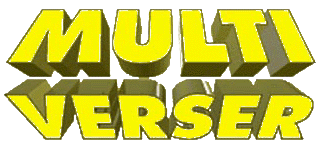Patreon or PayPal Me keeps this site and its author alive. Thank you. |
- Shukenja are strictly traveling holy men. Temples of all deities are run by clerics (or where appropriate druids) identical to their occidental ilk, but as these do not leave their shrines, they cannot be oriental player characters.
- Neutral and evil deities are served by shukenja of the same ethic, although dedication to such a deity and service of its worshippers may in some sense be a good act (selflessly dedicating his own life to the service of others who follow this god). Such shukenja would certainly emphasize the ethical dimension over the moral.
- Neutral and evil deities are served by non-player pseudo-class clerics, such as shamans, covered in the DMG. Since shamans are limited in level, the power of such deities on the PMP is significantly curtailed.
- Shukenja who represent certain good deities in the orient must also represent certain affiliated neutral and evil deities. It is arguable that under a certain mindset the good clerics in service to a god of life might also offer homage and sacrifice to the associated god of death. This, too, would attenuate the power and influence of the evil deities.
- Neutral and evil deities have no clerics. Shrines and temples to such gods are built by wealthy individuals, perhaps wu jen or samurai of appropriate alignment; worshippers muddle their own way through whatever ceremonies are performed, assisting (or abusing) each other in a type of perverse interactive lay ministry.
The mix would vary by alignment, with good gods having the most shukenja, evils the least, lawfuls the most sohei, chaotics the least; evils the most shamans, goods the least (shamans tend to be very self-serving, frequently power-grabbing or opposing tribal authority); chaotics the most unattended shrines, lawfuls the least. Clerics (druids) would be few in number, centralized at the most significant holy places, and absolutely parochial, possibly monastic, regardless of alignment. Sohei could take on some priestly duties at smaller lawful shrines, possibly some neutral-ethic shrines, in conjunction with their protective aspect.
The mix could also vary by the character of the specific deity. Gods of war would utilize more sohei; gods of health, luck, and fertility more shukenja; gods of freedom more shamans. Some gods might use none of one or more types. Others might so emphasize one type as to dwarf the significance of all others.
The decision should be made for each deity activated in the game. Players should be made aware of what type of holy men serve his god; and if his character is known to oppose a particular god, what generally is the type of servant that god might choose. Note that many gods might blur the oriental/occidental distinction, requiring consideration of who serves the god on both sides of the divide.
